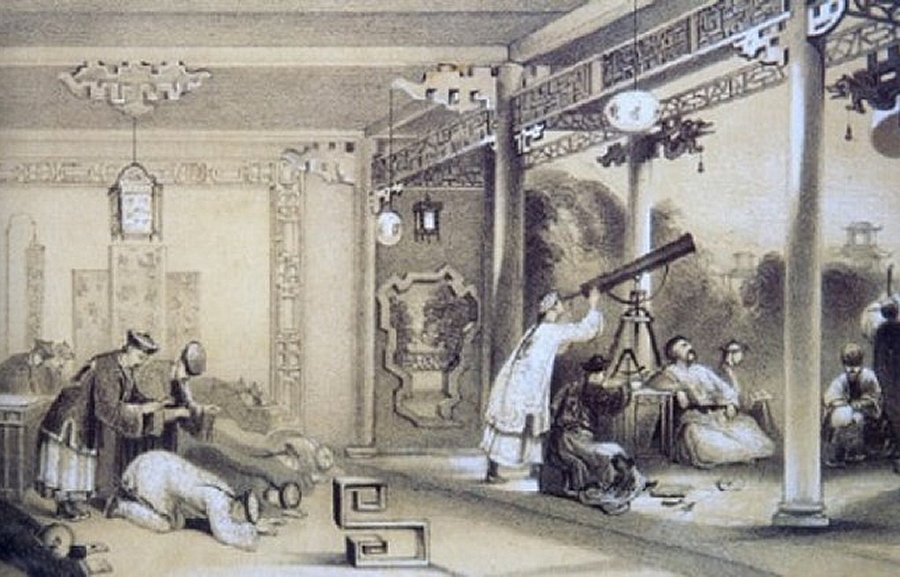AncientPages.com - On 10th May, 28 BC, a sunspot was observed by astronomers during the reign of Emperor Cheng of the Western Han Dynasty and was described as a black vapor as large as a coin at its center, ' and at sunrise the Sun was yellow.
China is among the earliest countries to develop astronomy and boasts the fastest development. As one of the four advanced natural science subjects in ancient China, astronomy, with innovative calendars and surprising inventions, played an essential role in the world's history of astronomical development.
Like people of other cultures, the ancient Chinese paid close attention to heavenly bodies. The sun, moon, and stars had features that they wanted to observe.
Joseph Needham (1900-1995), a British scientist, historian, and sinologist, was known for his scientific research and writing on the history of Chinese science. He wrote that the Chinese astronomers found 112 instances of sunspots. These were recorded in Chinese accounts between 28 BC and 1638 AD.
While Western astronomers of the Renaissance period were still arguing in 1615 about who was the first to discover sunspots, Chinese astronomers had already accumulated numerous records on sunspots.
Now it is known that the earliest records of sunspots were made in 28 BC by Chinese astronomers during the reign of Emperor Cheng of theWestern Han Dynasty.
From then until the late Ming Dynasty in the mid-17th century, Chinese history books recorded more than 100 sunspots.
Additionally, they also noted other sun phenomena, such as solar prominences and coronas.
The first record of a solar prominence was recorded on a tortoiseshell inscription, which describes "three suddenly bursting fires eating a chunk of the sun."
According to statistics, sunspots occur in a cycle every 11.33 years on average, which conforms with ancient Chinese documents and once again testifies that records of sunspots made by the Chinese are a valuable astronomical legacy.
AncientPages.com







